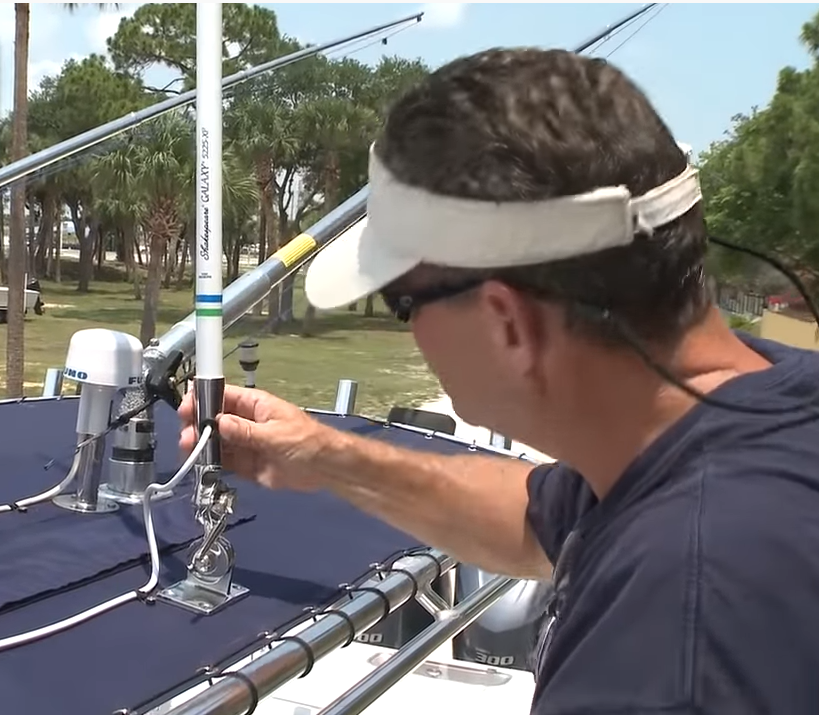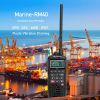The marine VHF radio antenna

So what is an antenna exactly? It is a device that takes an oscillating electric current and radiates that energy in the form of electromagnetic radiation and vice versa; depending on whether you are receiving or transmitting. More simply, it converts electric power into radio waves or radio waves into electric power. Understanding the important characteristics of the marine VHF antenna will allow you select the right antenna to best fit your vessel and your specific needs.
The most common type of Marine VHF antenna found aboard vessels is commonly referred to as a whip antenna. A couple of examples are shown below:
A 3’ stainless steel whip antenna. While this type of antenna can be mounted on any type of vessel such as smaller power boats, it is most commonly found on the masthead of sailboats of all sizes.
A fiberglass whip antenna of various lengths from 4’ to 23’. Again, this type of antenna can be mounted on any type of vessel however, they are typically found on power boats with larger vessels carrying the longer antennas.
The formal definition of antenna gain is the sum of antenna efficiency and directivity. For the non-expert in antenna theory, antenna gain could be stated as the "apparent" increase in power made available by the antenna alone.

In the simplest terms, it is a relative measure of an antenna's ability to direct or concentrate radio frequency energy in a particular pattern or direction. This measurement is typically measured in dBi (Decibels relative to an isotropic radiator) or in dBd (Decibels relative to a dipole radiator). However in most marine VHF antenna specifications it is simply stated as dB gain.
An isotropic radiator (think 0dB gain antenna) is nearly impossible to produce. However, this almost theoretical 0dB antenna is used as a starting point in antenna design criteria and for a base line in measuring antenna gain.
Considering the difficulties in producing a 0dB antenna, for the sake of this article we will presume that all antennas have gain whether positive or negative.
While in fact higher gains in an antenna do not cause an actual increase in the power radiated, it does shape the radiation pattern to concentrate that power into a desired pattern enhancing the perception of increased power.
So what does this all mean? Well basically as antenna gain increases, the radiation pattern narrows and elongates. More simply put, it means that the power being radiated by the antenna reaches out further the greater the increase in gain. All other things being equal, this provides much improved communications at longer distances.






